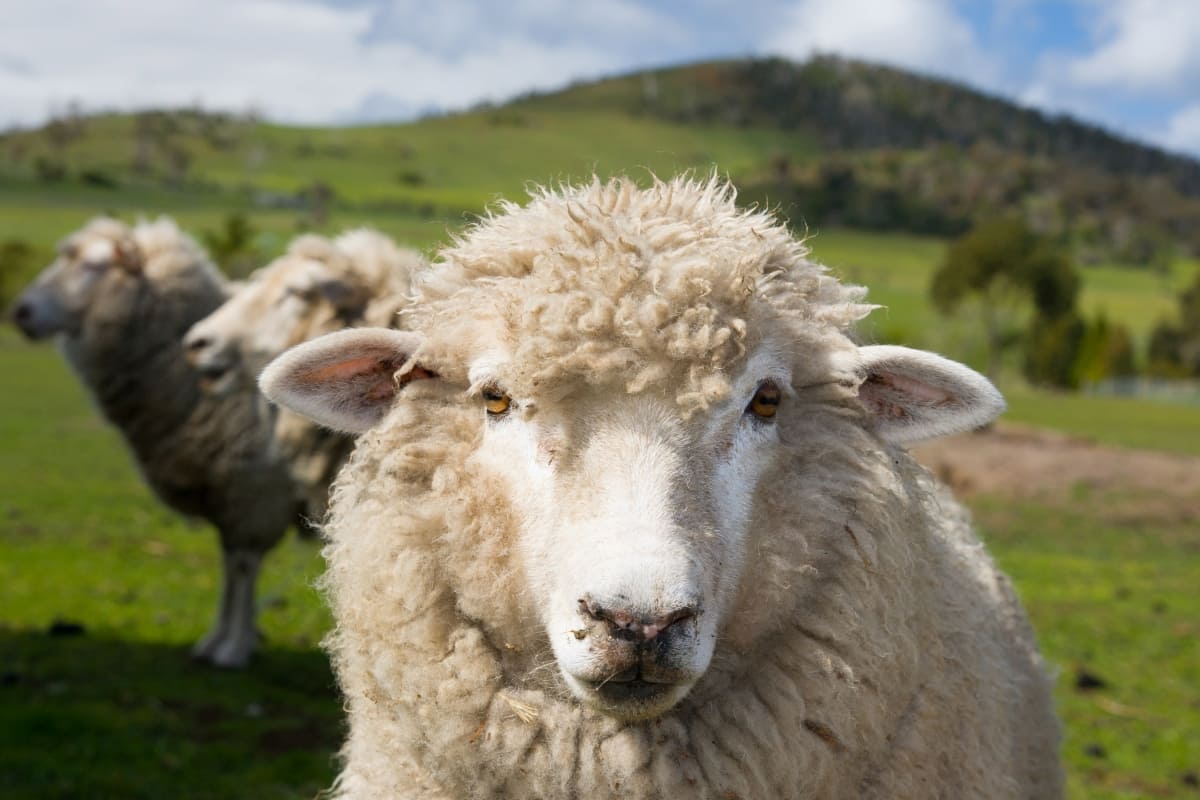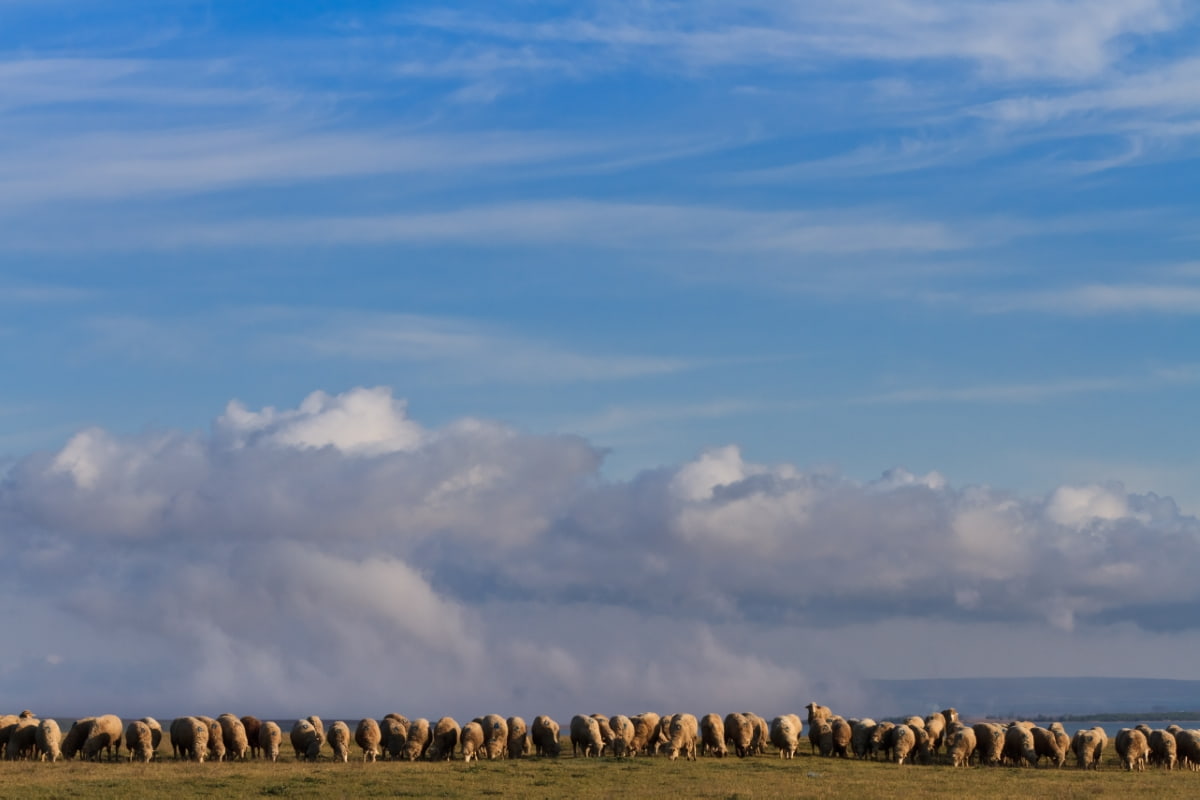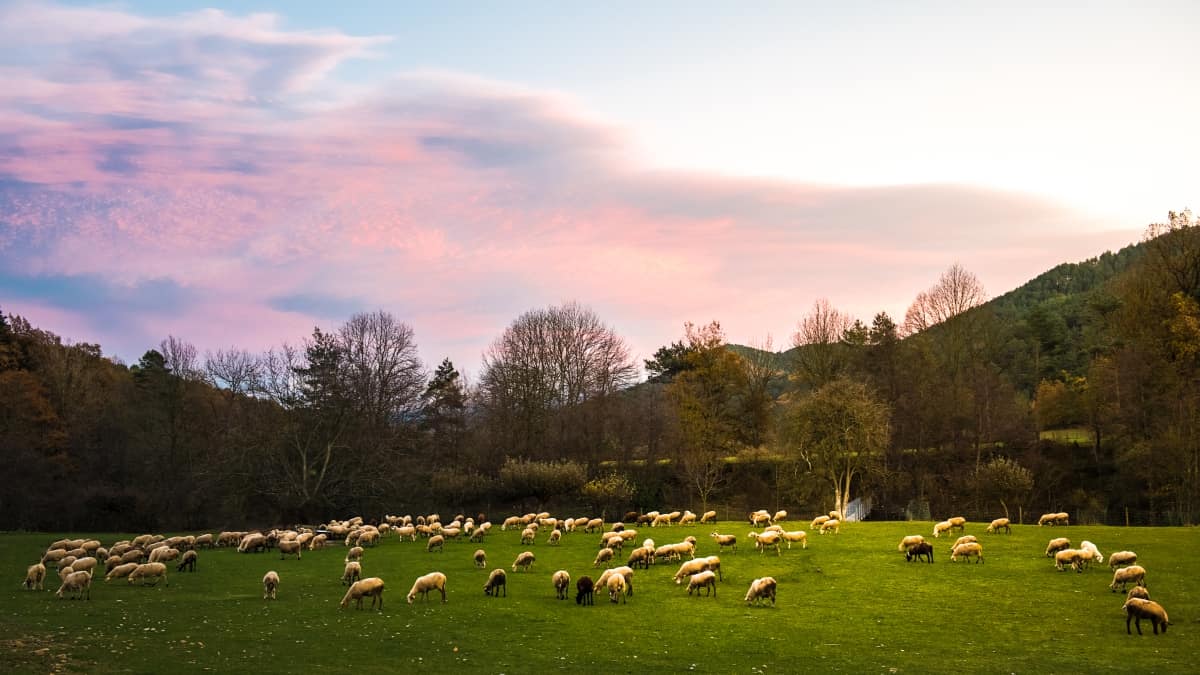Raising Poll Dorset Sheep comes with a multitude of benefits for farmers and homesteaders alike. These sheep are known for their year-round lambing potential, providing a consistent source of income throughout the year. Additionally, Poll Dorset produces high-quality meat and wool, making them a valuable investment for those looking to diversify their agricultural pursuits.

Guide to Raising Poll Dorset Sheep
Origin and Breed History
The Poll Dorset Sheep is a unique breed with an intriguing history originating as a polled variant of the British Dorset Horn in the 1950s. Bred for its medium size and heavy milking capacity, this sheep is known for its longevity and high productivity.
Key Characteristics and Breed Standards
With key characteristics like being hornless and adaptable to various climates, the Poll Dorset is prized by farmers worldwide. Breed standards emphasize traits such as fertility, ease of lambing, and good mothering instincts. Moreover, Poll Dorsets are relatively low-maintenance compared to other breeds, requiring minimal care while still yielding significant returns.
Poll Dorset Price
The cost of Poll Dorset sheep can vary depending on various factors such as age, pedigree, and health status. It’s essential to research and budget accordingly before making a purchase. The average cost of Poll Dorset ranges from $200 to $500 per head for a quality Sheep.
Poll Dorset Lifespan
Poll Dorset lifespan typically ranges around 9-20 years, making them a long-term investment for breeders. It’s essential to monitor your flock regularly for any signs of illness or distress. By addressing any issues promptly and proactively managing their health, you can help ensure that your Poll Dorset lives a long and healthy life on your farm.
Poll Dorset Size and Weight
At maturity, Poll Dorset ewes weigh between 150 and 200 pounds (68 and 91 kg), and mature Poll Dorset rams weigh from 225 to 275 pounds (102 to 125 kg). It’s essential to monitor the growth of your Poll Dorset flock regularly to ensure they are meeting the desired weight targets for optimal health and productivity. Providing a balanced diet rich in nutrients will help support healthy growth and development in these animals.
Advantages of Raising Poll Dorset Sheep
Year-Round Lambing Potential
Raising Poll Dorset sheep comes with several advantages for farmers looking to diversify their livestock operations. The benefit of raising Poll Dorset sheep is their year-round lambing potential, allowing for a more consistent production cycle and income stream throughout the year. This feature can be advantageous in meeting market demands and ensuring a steady supply of lambs.
Meat and Wool Quality
Poll Dorset Sheep meat is prized for its tenderness and rich flavor, making it a popular choice among consumers seeking premium cuts. Additionally, the wool produced by Poll Dorsets is of superior quality, known for its softness and durability, appealing to fiber artists and craftsmen alike.
Basic Requirements for Raising Poll Dorset Sheep
Shelter and Housing Needs
These sheep require a clean, dry, and well-ventilated environment to thrive. A sturdy shelter protects them from harsh weather conditions and predators. A sturdy shelter that protects them from harsh weather conditions like rain and wind is necessary. Poll Dorsets are known for their adaptability but still require adequate housing to stay healthy.
Fencing and Farm Infrastructure
Fencing is another crucial aspect of Poll Dorset sheep care. Strong fencing helps keep the sheep safe within designated areas while preventing unwanted intruders from gaining access. Regularly inspecting and maintaining fences is key to a successful Poll Dorset sheep farming operation. Investing in farm infrastructure like water sources, feeding stations, and handling facilities contributes to efficient management practices.
In case you missed it: Ultimate Guide to Bighorn Sheep: Characteristics, Diet, Lifespan, Breeding, and Lifecycle

Nutritional Management
Essential Diet and Nutrition Needs
Nutritional management is crucial when raising Poll Dorset sheep. Ensuring the sheep have a balanced diet is essential for their overall health and productivity. The essential diet of Poll Dorset sheep should consist of high-quality hay, fresh water, and mineral supplements to meet their nutritional needs.
Supplemental Feeding and Grazing Management
Supplemental feeding may be required during certain periods to ensure optimal growth and performance. Grazing management plays a significant role in providing Poll Dorsets with access to pasture rich in nutrients. Rotational grazing can help maintain the quality of the grazing area while preventing overgrazing.
Health and Wellness Care
Routine Health Checks and Vaccinations
Routine health checks and vaccinations play a key role in maintaining optimal health. Regularly inspecting your flock for any signs of illness or discomfort can help catch any potential issues early on. Vaccinations are essential in protecting your sheep from common ailments such as clostridial diseases, foot rot, and internal parasites. Contact a veterinarian to maintain a vaccination schedule tailored to the needs of your flock.
Common Ailments and Preventative Measures
Common ailments that may affect Poll Dorset sheep include respiratory infections, lameness, and parasitic infestations. Being observant of any changes in behavior can aid in early detection and prompt treatment. Implementing preventative measures such as proper nutrition, sanitation practices, and parasite control can significantly reduce the risk of illnesses among your flock. Regular deworming, clean living conditions, and a balanced diet are all integral components of proactive healthcare for your Poll Dorset sheep.
Breeding and Genetics
Selecting Breeding Stock
Breeding and genetics play a major role in the success of raising Poll Dorset sheep. When selecting breeding stock, it’s essential to consider traits like milk production, prolificacy, and overall health. By choosing the best breeding animals, you can improve the quality of your flock over time.
Managing the Breeding Cycle for Year-Round Lambing
Managing the breeding cycle for year-round lambing requires careful planning and attention to detail. By strategically timing matings and monitoring ewes’ reproductive cycles, you can ensure a consistent supply of lambs throughout the year. This allows for better utilization of resources and maximizes productivity on your farm. Implementing proper breeding practices in Poll Dorset not only enhances genetic diversity but also contributes to maintaining healthy bloodlines within your flock.
Lambing Management
Preparing for Lambing
Preparing for lambing season is a crucial time on the farm. Ensuring that your ewes are healthy and well-fed before they give birth is essential. Create a clean environment for the expecting mothers to feel safe during labor.
Care of Ewes and Newborn Lambs
Monitor your ewes closely as their due dates approach, paying attention to any signs of distress or complications. Have necessary supplies on hand like towels, iodine solution for navels, and milk replacer in case assistance is needed. Once lambs are born, provide immediate care by drying them off and helping them nurse from their mothers.
In case you missed it: Ultimate Guide to Raising Pelibuey Sheep: Farming Facts, Breed Profile, Uses, and Care

Make sure each lamb receives colostrum within the first few hours of life to build immunity. Keep a close eye on both ewes and lambs post-birth to ensure they are bonding well and recovering properly. Address any health issues promptly to prevent complications down the line.
Wool Production
Characteristics of Poll Dorset Wool
Poll Dorset sheep are highly valued for their soft and high-quality wool. The characteristics of Poll Dorset wool include its fine texture, excellent crimp, and natural luster, making it ideal for crafting luxurious garments and textiles.
Shearing Practices and Wool Handling
Shearing practices play a crucial role in maintaining the quality of Poll Dorset wool. Regular shearing helps prevent matting and ensures that the fleece remains clean and free from debris. Proper handling during shearing is essential to avoid damaging the fibers and maximize the yield of usable wool. After shearing, careful wool handling is necessary to sort, clean, and store the fleece properly. This process involves removing any remaining vegetable matter or impurities from the wool to prepare it for processing into yarn or other products.
Marketing and Economic Aspects
Selling Meat and Wool Products
There are various avenues to explore Poll Dorset meat and wool products. Selling meat and wool products directly to consumers can be a lucrative option. By emphasizing the quality and uniqueness of Poll Dorset meat and wool, you can attract customers looking for premium products with distinct characteristics.
Niche Markets and Direct Sales Strategies
Niche markets offer an opportunity to target specific consumer segments who value sustainable farming practices or organic production methods. By highlighting the breed’s attributes that align with these values, you can tap into niche markets and differentiate your products from competitors.
Direct sales strategies such as farmers’ markets, online platforms, or farm-to-table initiatives can help increase visibility and reach a wider audience. Building relationships with customers through personalized experiences or storytelling can enhance brand loyalty and drive repeat purchases.
In case you missed it: Ultimate Guide to Raising Ile De France Sheep: Farming Facts, Breed Profile, Uses, and Care

Conclusion
This American breed is a hornless variant of the British Dorset Horn. Medium-sized, durable, and exceptional milk producers, these sheep are a valuable addition to any farm. These sheep are versatile and adaptable to various climates, making them an ideal choice for a sustainable livestock operation. Their year-round lambing potential allows for consistent meat production throughout the year.
Note: The images presented in this post are intended solely for representation purposes. The images are meant to serve as visual aids and should not be relied upon as accurate representations of their real-life counterparts.
- Feed Your Flock for Less: Top 10 Tips to Save on Chicken Feed
- Ultimate Guide to Ossabaw Island Hog: Breeding, Raising, Diet, and Care
- Hatching Answers: The Top 10 Reasons Your Chickens Aren’t Laying Eggs
- Eggs and Economics: Breaking Down the Cost of Raising Backyard Chickens
- Defend Your Greens: Proven Methods to Keep Iguanas Out of Your Garden
- Ultimate Guide to Cinnamon Queen Chicken: A Comprehensive Guide for Beginners
- Ultimate Guide to California Tan Chicken: Breeding, Raising, Diet, Egg-Production and Care
- Ultimate Guide to Marsh Daisy Chicken: Breeding, Raising, Diet, and Care
- 10 Types of Chicken Farming Businesses You Can Start for Profits